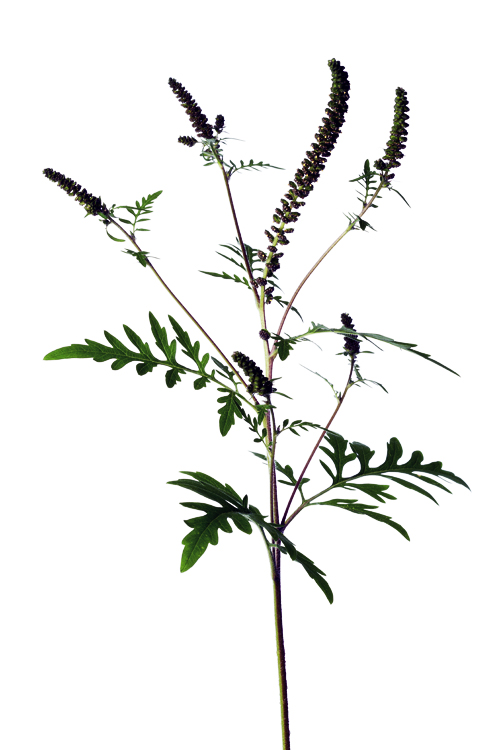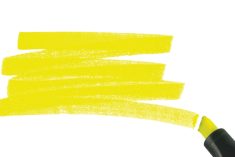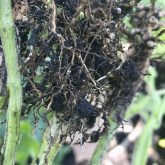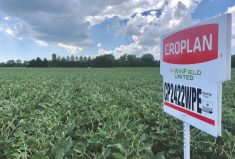In Ontario alone, farmers are now facing three different weeds with resistance to glyphosate, and a considerably longer list of those that are resistant to Group 2 chemistries.
No one is blaming farmers, or saying today’s farmers aren’t as sharp as their parents. After all, today’s farmers have had to learn about new pests, new diseases, new electronics, new marketing tools… the list is endless.
But it’s undeniable that with the rapid uptake of Roundup Ready and Group 2 use in the past 17 years, some of our weed-control knowledge has ebbed away, including some knowledge that we may need.
Read Also

Sensing the soil: Root cell research finds ‘stress hormone’
Research into how root cells react to soil stressors could help plants better adapt to changes in their climate.
Group 2s still useful
For Steve Johns, the issue is partly terminology, including whether a herbicide is truly systemic. “That gets into marketing and I think it’s been a bit misleading.”
Some products like glyphosates and phenoxy herbicides can get inside and move around in a weed. Others may be called systemic, but they may actually only be trans-laminar, meaning they may only penetrate into the leaf, says Johns, agronomic sales manager with Syngenta Canada.
The difference for growers is in whether they can rely on large droplets to disperse within the plant, or whether they need finer droplets for more complete coverage.
Nor is that the only concern for Johns who also farms just outside of Seaforth, Ont. where he has employed a diverse rotation of chemistries, depending on whether he’s growing corn or soybeans.
- From the Grainews website: Diversify rotations to slow resistance
Group 2 resistance, he says, isn’t as simple as the phrase might suggest. “Particularly in Group 2 resistance and IP soybeans, I can take you to fields where ragweed is resistant to two of three families of Group 2s yet still seems to be taken out by the third family,” says Johns. “So we have weeds that are resistant to imidazolinones (imis) and sulfonylureas (SUs), but triazolopyrimidine chemistry, like Broadstrike, still seems to work.”
Johns adds that University of Guelph weed scientist François Tardif has published a lot of work on nightshade populations which are highly resistant to imis, and one SU that can’t be used on soybeans. But the nightshade is still sensitive to primisulfuron and pyrimadine chemistries such as Broadstrike.
“In fact, my advice to a lot of retailers and growers is that with Group 2 resistance, we’re not doing the subject justice,” Johns says. “A weed could be clearly resistant to imis such as Pursuit, or sulfonylureas like Classic, and you still may have a viable tool with something like Broadstrike or FirstRate. And there’s value in rotating within those chemistries, of the three families of Group 2s.
“One of the primary things I talk about with guys, is always at fall harvest, when you combine your crop, what do you see for weeds?” Johns says. “That tells you where you need to start adjusting your program. Guys who weren’t using that much residual, they’re saying, ‘I have nightshade and lots of it!’”
Three issues for glyphosate
With glyphosate, it’s been easy to feel that farmers are becoming too reliant on the chemistry, yet Johns says this is really only part of a much more complex issue. There are now three shortcomings with glyphosate: weeds that germinate outside of their window (seedling dandelion, Eastern black nightshade), weeds that are not affected by glyphosate (tufted vetch, nutsedge) and weeds that glyphosate should work on but which are now resistant (Canada fleabane, giant ragweed, common ragweed).
Johns has also been intrigued by the latest research by University of Guelph’s Clarence Swanton, to redefine the critical weed-free period. That work shows that your weeds need to be dead the day your corn plant emerges from the ground. That means dead, not just sprayed, and it means there should be no sign of green tissue on the weed.
Swanton’s work indicates that emerging crop leaves can sense that surrounding weeds are not of their species. It is, says Johns, an important discovery.
Education is a good thing
Rob Miller, technical development manager with BASF Canada, cites another example with Group 14 PPO (Protoporphyrinogen oxidase) inhibitors, where a product such as Eragon (pyrimidine) is a pre-plant product whereas Reflex (fomesafen, a diphenylether), is the same class of chemistry, yet it can be used as a post-emerge in soybeans.
“In general, there always needs to be some education around the different modes of action and the different groups of chemistries,” says Miller, based in London, Ont. “Even within the same group of chemistry, the products are different.”
On a positive note, Miller believes there’s something to be learned through the increasing challenges of Roundup Ready systems. Now, with the risk of resistance, farmers are seeing they need to focus more on the different modes of action and the different types of herbicide chemistry, making sure they rotate their chemistry both within each crop and across all of the other crops in the rotation as well.
“It’s the responsibility of the whole industry to provide the proper education and proper awareness on the best management practices,” Miller says. “And I think farmers are starting to adapt to that, they’re starting to listen and pay attention. They’re looking at it more from the business side, and if they want to have good yields, then they need to have good weed control.”
Simple is best
Dave Kloppenburg is witnessing the same trends and the refamiliarizing with technologies and chemistries that Miller and Johns are seeing. But he still wants to keep things simple.
“For practical purposes, a knowledge of herbicide groups is a good place to start,” says Kloppenburg, row crop segment manager for DuPont Pioneer. “People need a good knowledge of herbicide groups, that you have multiple groups in the program, and that those groups are based primarily on mode of action. The site of action is interesting, and it does have real impacts in the field, where you might have a pigweed population that is resistant to one type of Group 2 but still susceptible to another type, where the imis bind in one place and SUs bind in another place on the enzyme but they both have the same mode of action.”
With terms such as “contact” and “systemic,” Kloppenburg wonders if the industry couldn’t do a better of job of standardizing the terminology. Some would call glyphosate a contact product, yet it’s actually a systemic. Then there are products with contact activity which are also non-systemic.
“It’s almost like a subset, and then there are products that have contact activity that may or may not be systemic, but then combined with soil activity, that becomes important as you look at resistance management,” says Kloppenburg.
Kloppenburg says there’s a need to start simple and build from there, but that there’s also a sense of urgency.
“The lesson is that we have to continue worrying about resistance and the most important thing is to have diversity,” Kloppenburg says. “That’s going to be the reality going forward.”
















